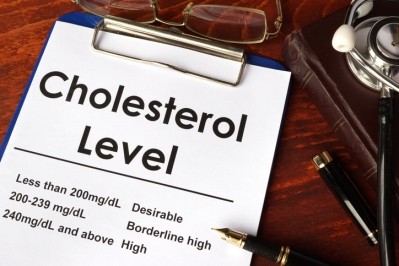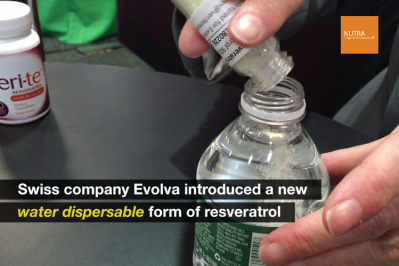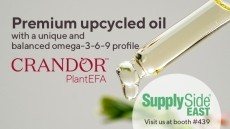Special edition: Botanicals
Within broader synthetic botanicals question, stakeholders focus on labeling issue

The urge to synthesize molecules of interest has always been an issue at the fringe of botanical ingredient supply. Botanical ingredients can become popular much more rapidly than supply chains can expand to meet that demand. So periodic shortages have developed, prodding some chemists to find ways to meet that demand without having to wait for more plants to grow (or to be located in the wild).
And some botanicals, if present in only small quantities in the source plant, could be expensive.
The cheapest and dirtiest way to meet this demand is through simple adulteration. Want to extend the supply of, say, a polyphenolic ingredient? Just add in some cheaper purple stuff. Want to make a weak, diluted extract appear to meet spec? Mix in a dollop of cheap marker chemicals to fool a TLC test.
Truthfulness, not safety is the issue
The issue with synthetic versions of bioactives is a more nuanced one. Synthetic versions of naturally occurring chemicals have a long history in the marketplace and in many cases the efficacy of these is not in question. Almost all of the vitamin C that goes into multivitamins or is used to fortify food products is synthesized in large chemical factories in China, for example.
And there is no real scientific agreement about the fact that whether it comes from a vat or from an orange, ascorbic acid preforms similarly in the body.
Many letter vitamins are synthesized, and their legal presence in the marketplace was addressed in the Proxmire Amendment back in the 1970s. But organic chemists didn’t stop there; synthetic versions of lutein, resveratrol, astaxanthin and pterostilbene among others are all in frequent, above board trade.
NDI question remains undecided
But what is the regulatory status of these ingredients? Since 2010 FDA has issued two versions of the draft guidance on New Dietary Ingredients. In both cases, the agency has reiterated its view that synthetic versions of naturally occurring constituents of botanicals do not meet the definition of a dietary ingredient. They may mimic (in some cases perfectly) the constituent in question, but because they were never physically resident in a plant, they are not a permissible dietary ingredient.
So developers of new synthetic dietary ingredients, those fashioned to mimic a constituent of a botanical, would be unlikely to be successful if they filed a New Dietary Ingredient Notification. One of the first things FDA does with these dossiers is to determine if the substance in question meets the definition of a dietary ingredient. You say you’ve got a synthetic botanical there? Sorry.
One way developers of these ingredients have found to get around this hurdle is to file self-affirmed GRAS notices on the ingredients. Ingredients that meet this safety standard can go into the marketplace without having to go the NDI route.
There is broad disagreement about whether FDA is right in disallowing these bioidentical substances. Since the most recent version of the NDI draft guidance was issued, there has been little movement to report. President Trump’s executive order mandating the elimination of two existing regulations for each new regulation put into place seems to have frozen the development of new rules. So it’s anyone’s guess when the many issues within the broad NDI question will be ironed out.
Question of labeling when efficacy is an issue
In the meantime, botanical suppliers say the practical way to address this issue is on the truth in labeling front. Leave aside questions of safety (which for most of these ingredients FDA doesn’t not seem overly concerned about) and focus on the consumers’ right to know about where their ingredients come from.
One entire organization, the Natural Algae Astaxathin Association, has sprung up precisely to address that question. NAXA seems to have been successful in raising awareness that not all astaxanthin is the same. In the case of natural vs synthetic astaxanthin, there is a question about sterioisomer differences and what that has to say about relative efficacy.
Even if substances behave the same, consumers have a right to know
That’s not always the case: The chief science officer of the American Herbal Products Association, Holly Johnson, PhD, said some of these synthetic versions of botanical constituents, like the synthesized vitamins, are equivalent in their activity. Johnson did her PhD work in pharmacognosy, and so has had long experience in assessing the efficacy of naturally occurring compounds.
“In some situations there is an issue with activity; in others not so much. A molecule of caffeine, for example, behaves the same whether it comes from a tea leaf or you made it in a vat. That’s true for some of the small molecules that are important in the botanical supply industry,” Johnson said.
But transparency in labeling would demand for these substances that consumers know where they came from, she said.
“You have to be transparent about whether your ingredient was made in a big vat or via the machinery of a plant. It’s much more expensive to grow grapes in the soil and extract the resveratrol than it is to synthesize it,” Johnson said.
“This is a problem if the substances in question are called ‘natural’ and/or plant-derived. We are looking at this issue in the ABC-AHP-NCNPR Botanical Adulterants Prevention Program (BAPP), since we consider this to be a potential issue of mislabeling and misleading the buyer (if a company purchasing ingredients to be used, say, in a dietary supplement) and/or the consumer, if the product is labeled ‘natural’ and/or ‘plant-derived’. While the train has left the station with respect to the production and availability of these synbio ingredients – they’re being produced by large companies with a significant financial interest in these ingredients, the issues facing the botanical community is honest, transparent, and appropriate labeling so that consumers can choose whether to purchase products containing such ingredients,” said Mark Blumenthal, founder and executive director of the American Botanical Council.
Testing for synthetics
Sabinsa Corporation is one of the world’s leading suppliers of curcumin ingredients. Sabinsa, like some of its competitors, contracts with thousands of farmers to grow turmeric in India and elsewhere. That’s a legitimate form of competition. Where Sabinsa draws the line is when suppliers substitute in synthetic curcumin for the naturally extracted form and try to market it as the same stuff. The company developed a carbon isotope testing method to distinguish natural curcumin from the synthetic versions.
“Sabinsa was the first organization to identify this reprehensible practice in the marketplace, and raise the alarm in the industry so buyers can protect their companies, and consumers. We proactively began having all lots of our Curcumin C3 Complex and related products tested by carbon dating to assure it is of natural origin. Unfortunately, we remain the only large curcumin supplier to do this. We encourage other suppliers, yes even our direct competitors, to validate that their curcumin or turmeric ingredient is not synthetic and if it is, accurately label that it is,” said Shaheen Majeed, president of Sabinsa.
“The use of synthetics to spike botanical extracts has always been a problem: synthetic vanillin in vanilla, rutin and quercetin in ginkgo, synthetic food dyes in bilberry and turmeric,etc. These spiking tools are always a moving target. Fortunately, a few leading botanical supply companies, along with organizations such as ABC and AHP continue the work of identifying and developing test methods to detect these new approaches to adulteration,” said Cal Bewicke, president of Ethical Naturals.
















